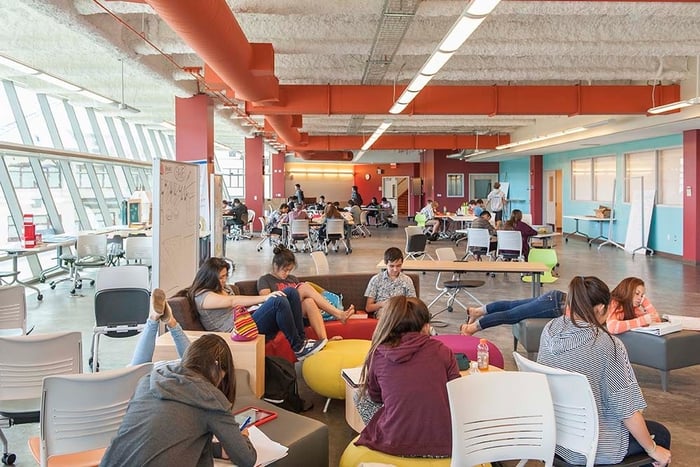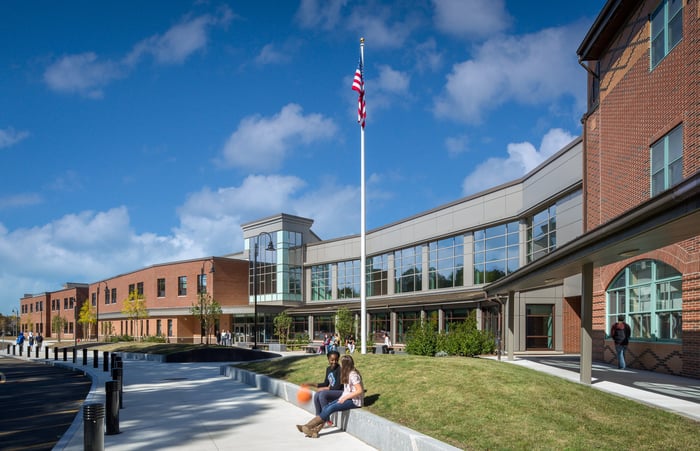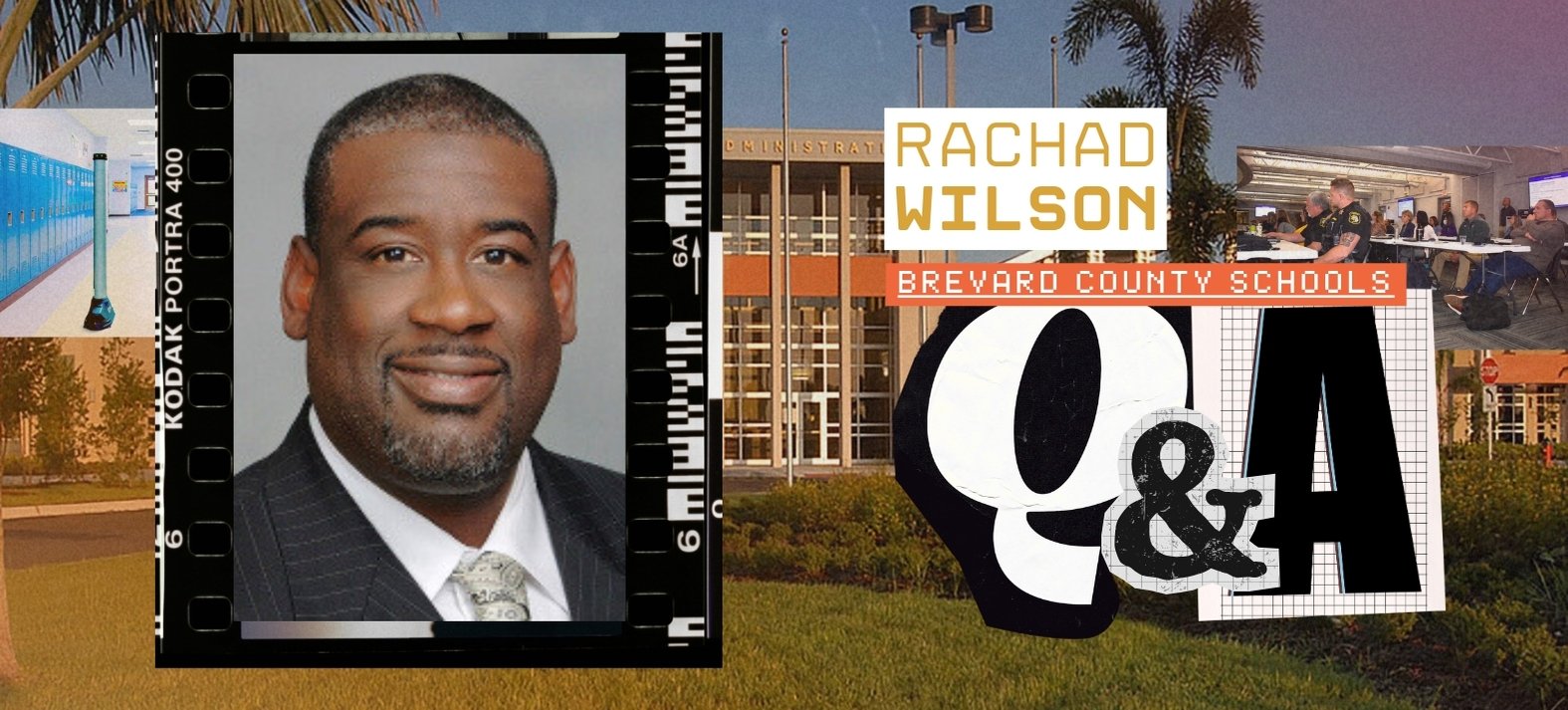The mission of CHPS is simple: create optimal learning environments by building the best possible schools. As you’re aware, this mission is easier said than done, which is why the national non-profit has done its fair share of evolution over the years.
With this year being the 15th anniversary of CHPS, we caught up with our friend Dr. Stephany Mason, Technical Director at CHPS, to see what’s new.
For those who need a refresher, what is the main goal of CHPS?
Our mission is to make every school an ideal place to learn. We aim to foster well-designed, constructed, and operated k12 facilities that enhance student performance and positively impact teacher and student health and wellness.
We have three main priorities. First, the occupants; second, conserving energy, water and resources; and third, being good environmental stewards by reducing waste and pollution. We address not just building performance but overall wellness.
 Iolani School Sullivan Center, Honolulu, HI
Iolani School Sullivan Center, Honolulu, HI
What’s new right now?
A lot is new at the moment! Our former Executive Director Bill Orr has retired after leading CHPS from a California organization to a national one. Our new director, Elisabeth Krautscheid, is now looking to expand this national presence.
We are looking to go back to our core priorities and focus on leading the path forward for improving the built environment, because it plays a huge role in the health and performance of students, teachers and staff. We want to look beyond just new construction, and expand our reach more into the many existing buildings in need.
We’re looking to further develop our Operations Report Card, which is our benchmarking program that can be used in new schools to assess performance and also for existing schools to assess needs. In Colorado, the Adams 12 district used the assessment on all 49 schools to see where money should be spent and what should be addressed. It’s great to build to a standard, but it’s equally important to monitor and assess the buildings afterword, to maintain them over time.
Another exciting development is that we just received funding to update and reformat our ORC. This update will allow students at different grade levels to use their school building as a learning tool. More details will be coming out in the next few months, but essentially we’re undertaking this project in order to build the ORC into curriculum so that students have a connection to the school--it’s not just a place they show up. The idea is to have a school that everyone is proud of and has a connection to. We want them to have pride and ownership.
 Stoneham Central Middle School, Stoneham, MA. Photo by Ed Wonsek Art Works.
Stoneham Central Middle School, Stoneham, MA. Photo by Ed Wonsek Art Works.
In addition, earlier this year CHPS became a Better Buildings Zero Energy Schools Accelerator Partner to help schools implement zero net energy and understand the associated non-energy benefits. This is in line with our belief that it’s about more than just cost savings and energy efficiency--additional improvements to the indoor environmental quality help students and staff in other non-tangible ways.
Can you share insights on how many schools have the CHPS certification?
There are over 300 completed schools but we also have more than 300 in process.
What differentiates CHPS from LEED?
The CHPS certification criteria and LEED are different structurally, philosophically, and programmatically. We are all about the occupants, their health, wellness and performance; we prioritize indoor environmental quality. And k12 has been and still is our only focus, whereas LEED started with commercial buildings. That’s a big differentiator because we put less emphasis on the site; we want to conserve it, but you don’t have as much freedom and flexibility to site a school and we’re sensitive to that and other unique qualities of schools, such as funding.
You recently announced a partnership with Sustainable Minds. What is that about?
Our vision was to make it easy for school districts to find the best products. CHPS had been maintaining a database, but we were searching for the right partner so we could focus more on our core mission. The Sustainable Minds Transparency Catalog fit all our criteria: they’re online, free, verification-neutral, and have multiple product types.
This partnership will promote product transparency for schools, and encourage manufacturers to list their information in the catalog and develop healthier products. We have a couple of relatively new credits, EPD’s and material health reporting, so this new catalog will make it easier to find high-performance products that meet these criteria.
On October 1st, our product database will be solely external and link from the CHPS website.
What is the cost-effectiveness of CHPS?
Schools consistently prove, on a case-by-case basis, that if you design and operate your schools for wellness, you save money. You don’t just save on deferred maintenance but also get a return on having healthier students and lower absenteeism. Our guidelines also help reduce teacher sickness and increase retention.
.jpg?width=700&name=Reddington%20-%20Wolf%20Architecture%20(1).jpg) Redington Junior/Senior High School, Wasilla, AK. Photo by Wolf Architecture, Inc
Redington Junior/Senior High School, Wasilla, AK. Photo by Wolf Architecture, Inc
It sounds like a lot is going on at CHPS. In a nutshell, what does the future hold?
We are always looking to evolve, and the new CHPS National Core Criteria will be released in 2018. The driving force behind this is our passion for providing optimal learning environments. We’re striving for an increased emphasis on communication between people in the school and community.
We’re also looking at creating guidance documents for no-and low-cost steps all schools can take to become healthier and more sustainable, in particular underserved communities that don’t have a lot of resources. We want to help them improve, because even small things that people might not pay attention to can make a difference and they can use this to drive change in their community. We want the occupants to be knowledgeable. That’s what we’re all about: the people and processes that maintain a school.

Posted by
Join us at the K12 Facilities Forum!
The community for district and facilities leaders
Nov 8-10, 2026 | San Antonio, TX









-3.png)

Comments